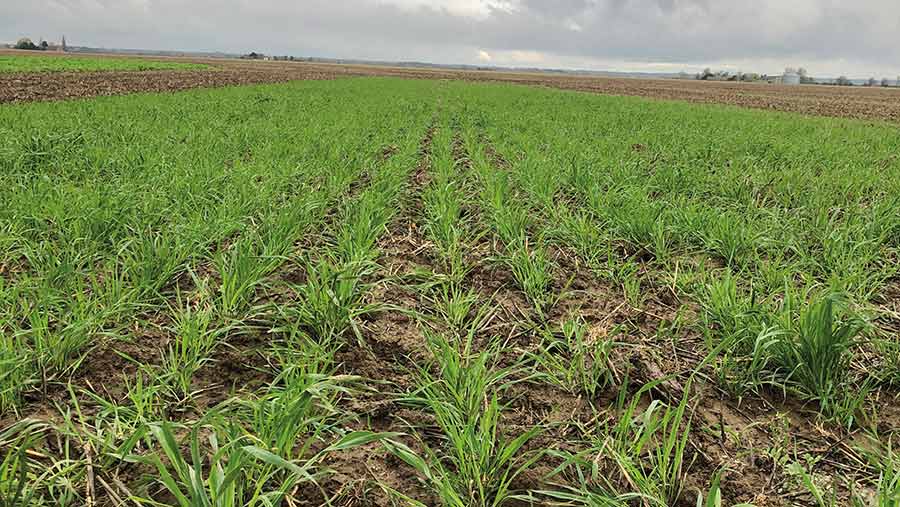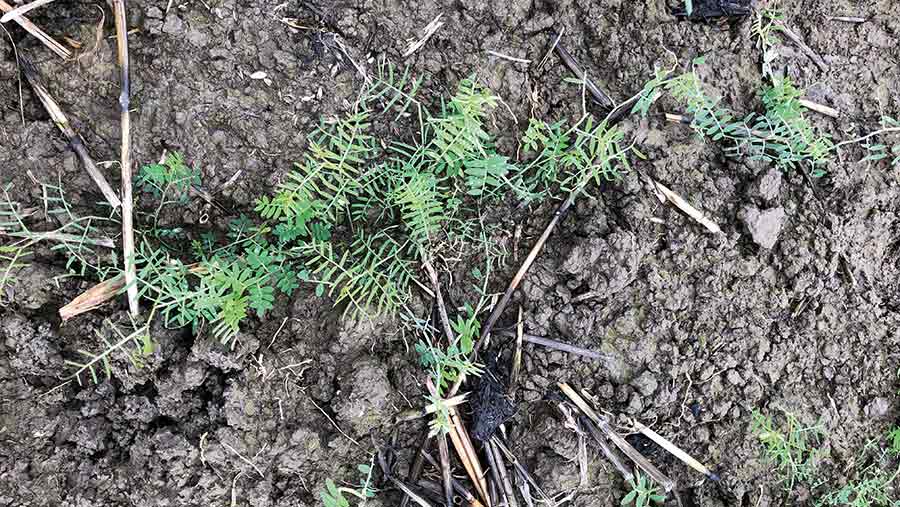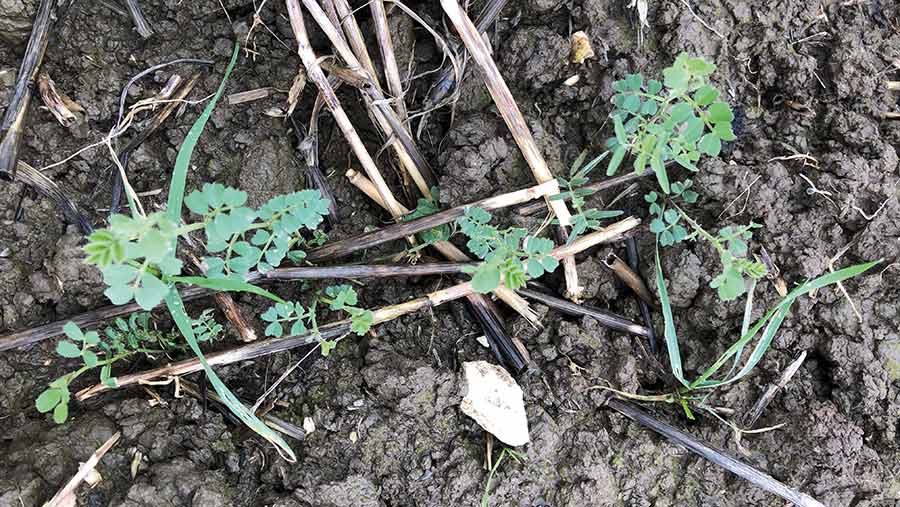Why Dyson Farming is trialling different cover crops
 © Mike Abram
© Mike Abram Cover crops are a key part of Dyson Farming’s commitment to improve soil health and transition towards a regenerative approach on its 14,000ha of farmland spread across Lincolnshire, Gloucestershire, and Berkshire.
But like many, the business feels it can still tweak how they are integrated into its rotation, which is why, in conjunction with Anglian Water and Boston Seeds, it is running a field-scale, large-plot trial of multiple different cover crop types, varieties and mixtures in Lincolnshire.
See also: How to achieve the most effective cover crop destruction
The business is attempting to reduce cultivations, where possible, across its rotation, which includes potatoes, sugar beet, peas, wheat, barley, maize, and rye for anaerobic digestion.
“As part of reducing cultivations we need something in its place to help structure soils,” says Tom Storr, research agronomist for Dyson Farming.
Useful aid
Cover crops will never be the complete answer for compaction caused by heavy machinery, but they’re a more than useful aid, he says.
Across the business, catch crops are planted after oilseed rape and vining peas before autumn-sown wheat, and overwintered cover crops grown before spring crops, such as potatoes, sugar beet, spring barley and maize.
But changes in the rotation and some emerging threats mean the business may need to change some of its cover crop practices.
“With high nitrogen prices, increasing legumes in the rotation could be beneficial, but we don’t know what impact that would have on our vining peas, while we’re not using covers before potatoes everywhere as we have one eye on wireworm.
“How can we mitigate that? The industry is starting to look at cover crops and think about what that species gives and what it doesn’t, and what problems it might cause either through pests, disease or being difficult to drill through.”
The trial
The business would also like to understand better nutrient uptake and release, and the impact on following cash crops.
That led to the trial, which is comparing five different cereal cover crops, four clovers, four vetches, three mustards, three radishes and four mixtures.
All were drilled in early September in large plots of 12x80m using a Horsch Avatar demonstrator.
One half of the plot was drilled following cultivation with a Simba SLD, while the other half was direct-drilled into previous crop stubble.
An immediate observation from the trial is that the vetches are much more reliable than the clovers, which have mostly failed to establish to any degree.
Slug and other pest pressure might have contributed, although Dr Storr wonders too whether they didn’t get the establishment spot on for the clovers and whether they would have benefited from rolling.
However, with cover crops commercially broadcast using a seed applicator on the autumn Simba SLD cultivator, he says the business needs robust cover crops that will grow in that system.
“We’ve also got the added pressure of SFI [Sustainable Farming Incentive] requirements requiring well-established green cover by December, and not wanting to waste seed,” he says.
Establishment differences
Differences in establishment were also evident in some cover crop species between direct-drilled and cultivated, with generally the direct-drilled side establishing better with faster green canopy cover development, especially for brassicas and cereal cover crops.
“There was about 10% more moisture held in the no-till side when measured with a soil moisture probe to 5cm depth.
“Increasingly, if we get dry summers and autumns that moisture conservation will be important,” Dr Storr says.
The cultivated side also became a little cloddy because it was so dry when cultivated, he notes, while there were large cracks to lose seed down, and less seed-to-soil contact, which may have contributed to poorer establishment.
Cover crop varieties
The trial is also comparing different varieties of the same cover crop species.
“There’s a lot of understanding in a cash crop of what a specific variety brings. It would be nice to get to the same with cover crops – what are the differences and is there an agronomic benefit?”

Villiana hairy vetch © Mike Abram
In the trial, there was a clear difference in growth between some of the vetches, for example, with Bingo purple vetch much more vigorous than Villiana hairy vetch and Jose spring vetch.
Extra legumes in cover crop mixes offer potential mitigation to high nitrogen fertiliser prices by fixing some nitrogen for following cash crops.
Research in the UK is limited on how much and when that nitrogen might be available, Dr Storr notes.

Jose spring vetch © Mike Abram
“In the US, some clovers and vetches can fix up to 150kg/ha/year of N, but they’re probably quite thick stands grown in warmer climates over a better growing window than our winter, so we likely have to take down our expectations.”
Nodules have formed on the vetches, he says. “So they should be doing a small job at least.”
Soil nitrogen
In some of the covers and a fallow control, soil mineral nitrogen cores to 20cm depth are being taken with the help of Anglian Water on a monthly basis over winter to identify whether nitrogen is being removed from the soil by the cover, and later in spring to see whether it is released as the cover crop senesces to be available for the following cash crop.
“The aim is to understand when the nitrogen is returning to the soil to see whether it is possible to synchronise that with putting the next crop in.”
By comparing cereal covers, vetches, mustards, the Smart radish and a couple of mixtures, he hopes to get a feel for which might meet the goal of taking up nitrogen over winter to reduce the risk of leaching, and then slowly releasing it as the follow crop might need it, and whether tillage makes a difference.
“By the November sampling there had been a reduction of about 70-80% in soil nitrogen across the board, including the fallow where it has moved below the sampling depth, whereas hopefully in the covers it is in the plants.”
Yields will be taken from following maize crop to see which of the covers had a positive or negative impact, he concludes.
Current cover crops at Dyson Farming
Dyson Farming farm managers are using about 10 different multispecies cover crop mixes commercially, research agronomist Tom Storr says.
Some are bought as ready-made, off-the-shelf mixes, while others are put together by the farm managers, with cost potentially changing both the choice of species and also the percentage inclusion of a species.
Oats and vetch is a typical choice ahead of non-spring barley cash crops, such as sugar beet and maize.
“It’s a simple, economical mix that we get good results from,” Dr Storr says. “It can be grazed, which helps turn the biomass into more nutrient-available material.”
Before spring barley, the mix tends to be based on linseed, vetch and phacelia.
Ideally, the farm would prefer to direct-drill spring barley into the cover crop residue, but Dr Storr says flexibility with cultivations are important, as is soil type and how much biomass or residue is left.
“With a variety of drills used across the farms, residue flow through them is an important consideration to ensure that it does not hinder the drilling operations.”
In some instances, large biomass cover and catch crops have caused problems with the speed and efficiency of the drilling operations.
“Choosing more upright species that are easier to drill into can help, and there’s a lot you can do with cover crop seed rates to control the amount of biomass to help make direct-drilling possible,” he suggests.
Termination timing is also key, although grazing with sheep can help manage excess biomass.
Cover crop trials single species
Cereals
- Black oats (Tradex)
- Black oats (Luxurial)
- Spring oats (Canyon)
- Winter oats (Mascani)
- Winter rye (Dukato)
Clovers
- Berseem (Alex)
- Berseem (Tabor)
- Crimson (Carmina)
- Persian (Pasat)
Vetches and peas
- Spring vetch (Jose)
- Hairy vetch (Villiana)
- Winter vetch (Nacre)
- Purple vetch (Bingo)
- Winter peas (Lapony)
Mustards and linseed
- White (Marci)
- Brown (Terminator)
- Ethopian (Undercover)
- Winter linseed (Sideral)
Radishes and phacelia
- Smart radish
- Oil radish (Iris)
- Tillage radish (Daikon)
- Phacelia (Lilla)

